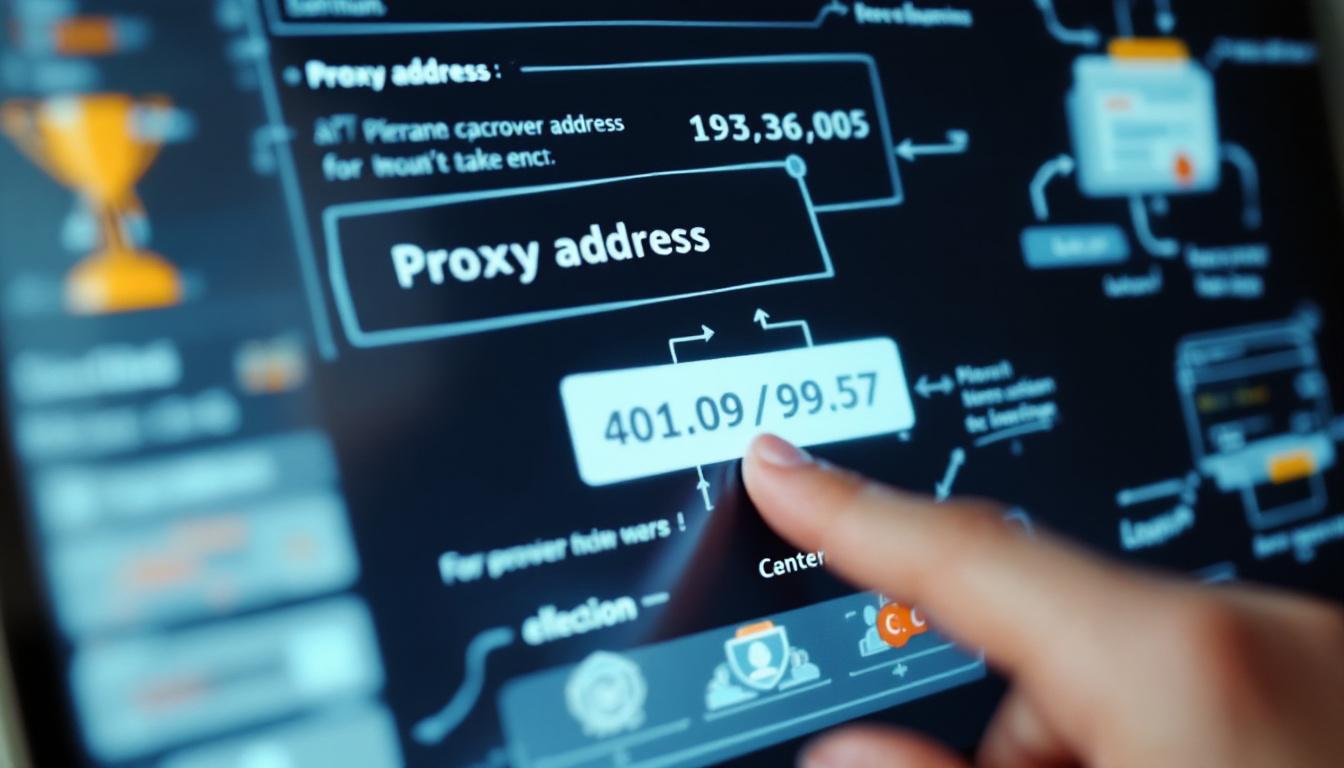Getting a Proxy Address
What is a Proxy Address?
A proxy address acts as an intermediary between your device and the internet. When you connect to the web through a proxy, your requests are routed through this address, masking your actual IP address. This can provide a layer of anonymity and security, allowing users to browse the internet without revealing their true identity.

In a world where online privacy is increasingly important, understanding proxy addresses is essential. They can help protect your data from prying eyes, be it from hackers, advertisers, or even your internet service provider. With a proxy, you can enjoy a more secure and private browsing experience. Moreover, proxies can also be instrumental in safeguarding sensitive information, especially when using public Wi-Fi networks, where data interception is a significant risk. By employing a proxy, users can ensure that their online activities remain confidential, thus reducing the likelihood of identity theft and unauthorized access to personal data.
How Does a Proxy Work?
When you enter a website URL in your browser, your request is sent to the proxy server instead of directly to the website. The proxy server then forwards your request to the target website, retrieves the data, and sends it back to you. This process effectively hides your IP address, making it seem as if the request originated from the proxy server itself.
This method not only enhances privacy but can also improve performance in some cases. Proxies can cache data, which means that frequently accessed websites load faster. Additionally, they can help bypass geographical restrictions, allowing users to access content that may be blocked in their region. For instance, a user in one country can use a proxy server located in another country to access streaming services or websites that are otherwise unavailable due to regional licensing agreements. This capability has made proxies a popular choice among digital nomads and travelers looking to maintain access to their favorite online resources while abroad.
Types of Proxies
There are several types of proxies available, each serving different purposes. Understanding these can help you choose the right one for your needs:
- HTTP Proxies: These are designed specifically for web traffic. They handle requests made through browsers and are ideal for basic browsing tasks.
- SOCKS Proxies: More versatile than HTTP proxies, SOCKS proxies can handle any type of traffic, making them suitable for various applications, including email and file transfers.
- Transparent Proxies: These proxies do not modify requests or responses and are often used for content filtering. They are called “transparent” because they do not hide your IP address.
In addition to the aforementioned types, there are also specialized proxies, such as residential proxies, which use IP addresses provided by Internet Service Providers (ISPs) rather than data centers. This makes them appear as regular users to websites, which can be beneficial for web scraping or accessing geo-restricted content without raising suspicion. Furthermore, there are also elite proxies, which offer the highest level of anonymity, ensuring that neither your IP address nor the fact that you are using a proxy is detectable. Understanding these nuances can empower users to select the most effective proxy solution tailored to their specific online activities and privacy needs.
Why Use a Proxy Address?
The reasons for using a proxy address are numerous and compelling. From enhancing security to improving online experiences, proxies are valuable tools for both individuals and businesses. Here’s a closer look at some of the key benefits:
Enhanced Privacy
In an age where data breaches and privacy violations are rampant, using a proxy can significantly enhance your online privacy. By masking your IP address, you can browse the internet without leaving a digital trail. This is particularly beneficial for those who frequently use public Wi-Fi networks, where security is often compromised.
Moreover, proxies can help you avoid targeted advertising. Advertisers track your online behavior to serve personalized ads. With a proxy, you can minimize this tracking, leading to a more enjoyable browsing experience.
Access to Restricted Content
Many websites and online services restrict access based on geographical location. This can be frustrating for users who want to access content that is otherwise unavailable in their region. A proxy allows you to bypass these restrictions by routing your connection through a server located in a different country.
Whether it’s streaming services, news websites, or social media platforms, using a proxy can open up a world of content that would otherwise be off-limits. Imagine being able to enjoy your favorite shows or read articles that are only available to users in specific regions!
How to Get a Proxy Address
Acquiring a proxy address is a straightforward process, but it’s essential to choose the right provider to ensure reliability and security. Here are the steps to get started:
1. Determine Your Needs
Before diving into the world of proxies, it’s crucial to assess your needs. Are you looking for a proxy for personal use, or do you need it for business purposes? Understanding your requirements will help you choose the right type of proxy and provider.
For personal use, a simple HTTP proxy might suffice. However, if you require more advanced features, such as anonymity or the ability to handle multiple protocols, consider investing in a SOCKS proxy or a dedicated service.
2. Research Proxy Providers
With a clear understanding of your needs, it’s time to research proxy providers. Look for reputable companies that offer reliable services. Read reviews and testimonials to gauge customer satisfaction and service quality.
Consider factors such as speed, reliability, customer support, and pricing. Many providers offer free trials, allowing you to test their services before committing. Take advantage of these offers to find the perfect fit for your needs!
3. Set Up Your Proxy Address
Once you’ve chosen a provider, setting up your proxy address is typically a simple process. Most providers will give you clear instructions on how to configure your device or browser. This may involve entering the proxy address and port number into your network settings.
After configuration, you should be able to browse the internet using your new proxy address. It’s a good idea to test your connection to ensure everything is working correctly. There are various online tools available that can help you verify your IP address and confirm that your proxy is functioning as intended.
Tips for Using a Proxy Address Effectively
Now that you have your proxy address, it’s time to make the most of it! Here are some tips to enhance your proxy experience:

1. Use HTTPS Proxies
When selecting a proxy, opt for one that supports HTTPS. This ensures that your data is encrypted during transmission, providing an additional layer of security. HTTPS proxies are particularly important if you frequently enter sensitive information online, such as passwords or credit card details.
Using HTTPS proxies can help protect you from potential threats, such as man-in-the-middle attacks, where hackers intercept your data. Prioritizing security is crucial in today’s digital landscape!
2. Switch Proxies Regularly
For enhanced privacy, consider switching your proxy address regularly. This can help prevent websites from tracking your browsing habits and reduce the risk of being flagged for suspicious activity. Many proxy providers offer a pool of IP addresses, making it easy to rotate through different options.
Regularly changing your proxy can also help you maintain access to restricted content that may be limited to specific IP addresses. It’s a simple yet effective strategy to enhance your online experience!
3. Monitor Your Connection Speed
While proxies can improve performance in some cases, they can also slow down your connection if not configured correctly. Keep an eye on your connection speed and performance. If you notice significant slowdowns, it may be worth exploring other proxy options or adjusting your settings.
Many proxy providers offer tools to monitor speed and performance, so take advantage of these resources. A smooth browsing experience is essential for enjoying the benefits of using a proxy!
Conclusion
Getting a proxy address can significantly enhance your online privacy, security, and access to content. By understanding what a proxy is and how it works, you can make informed decisions about your internet usage. With the right proxy provider, you can enjoy a safer, more enjoyable browsing experience.
Whether you’re looking to protect your personal information, access restricted content, or simply enhance your online experience, a proxy address is a valuable tool in today’s digital age. So why wait? Start exploring the world of proxies today and unlock the full potential of your internet experience!

